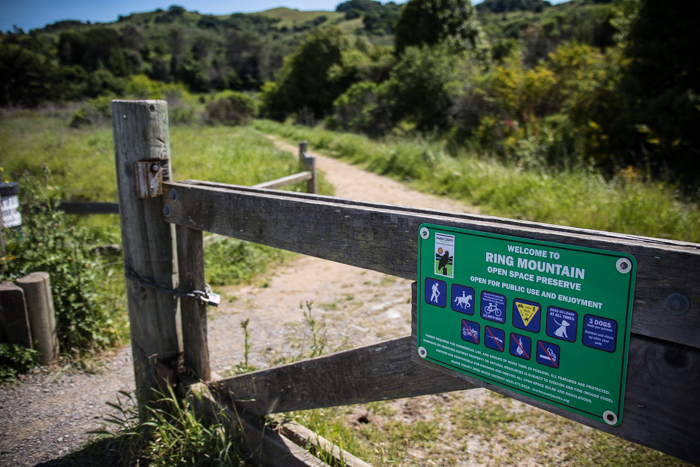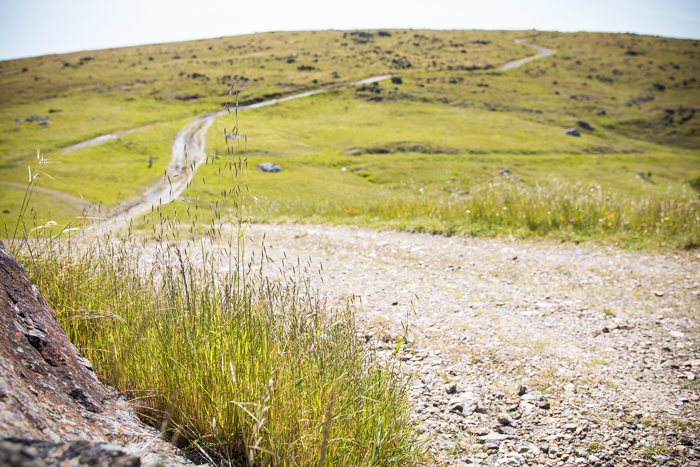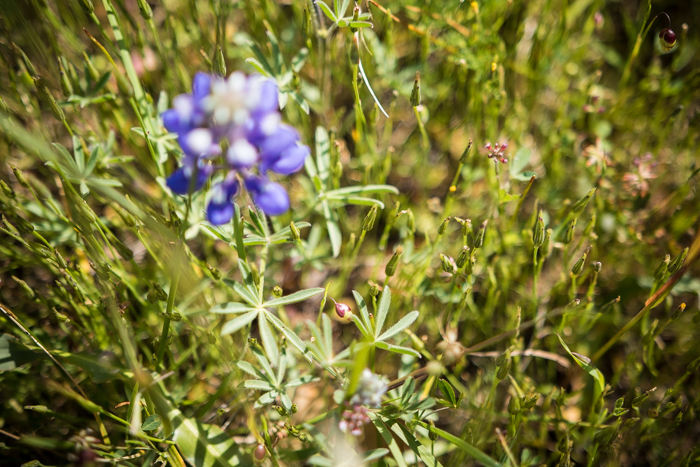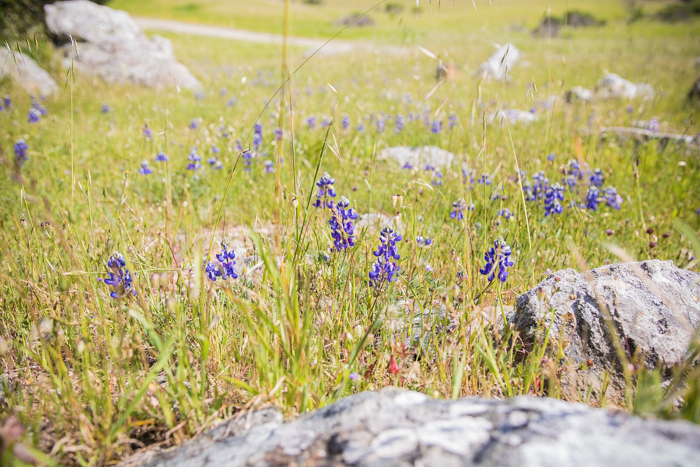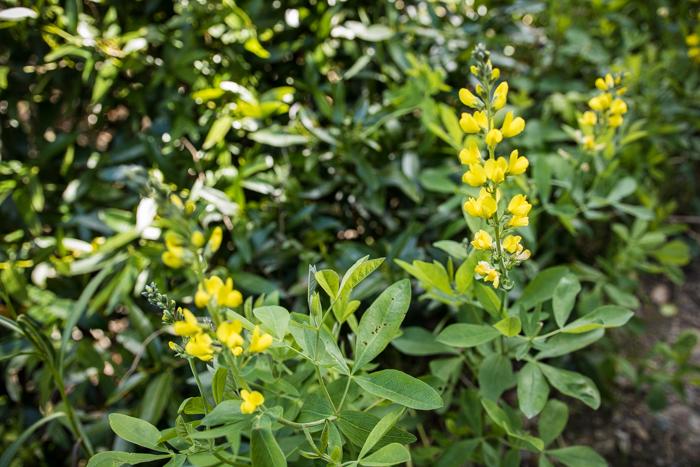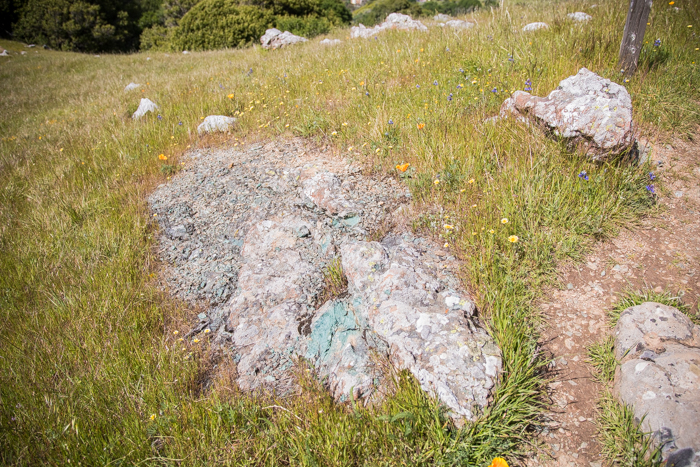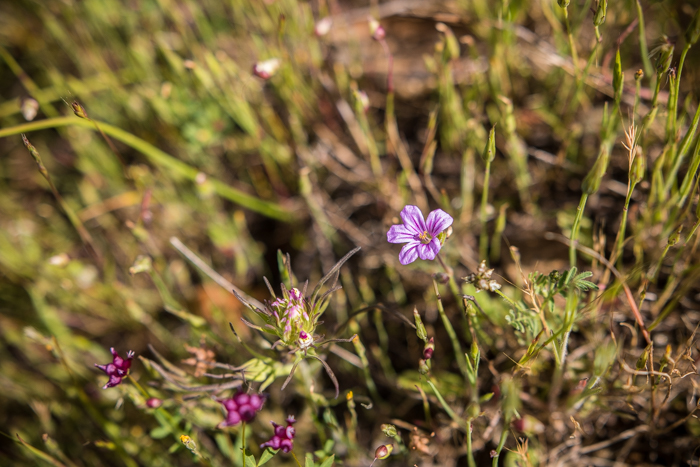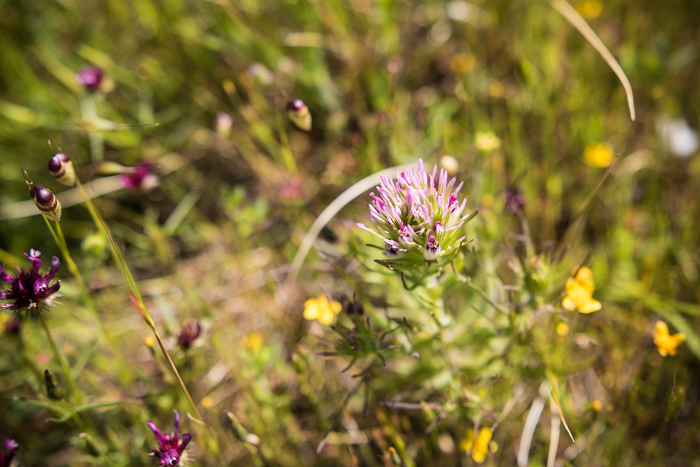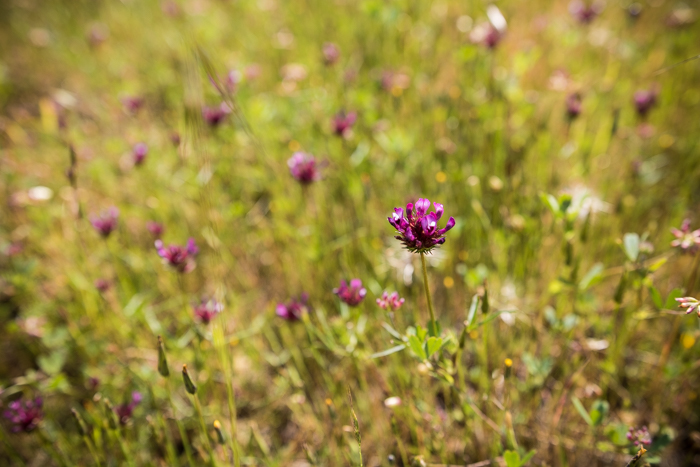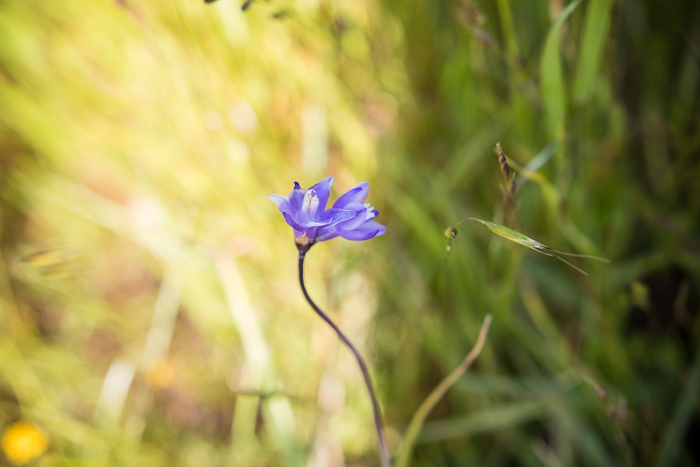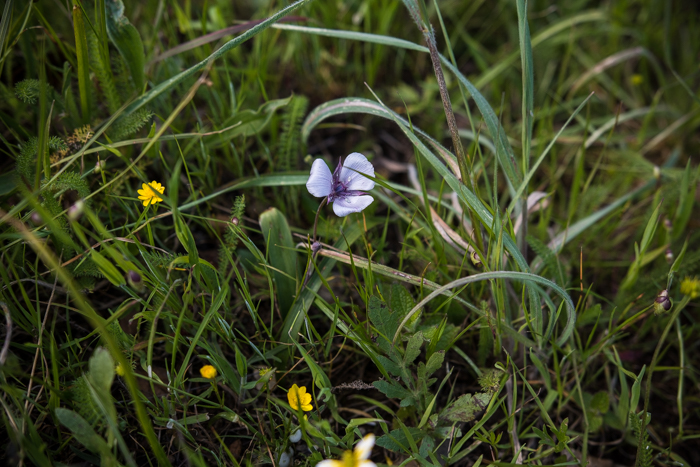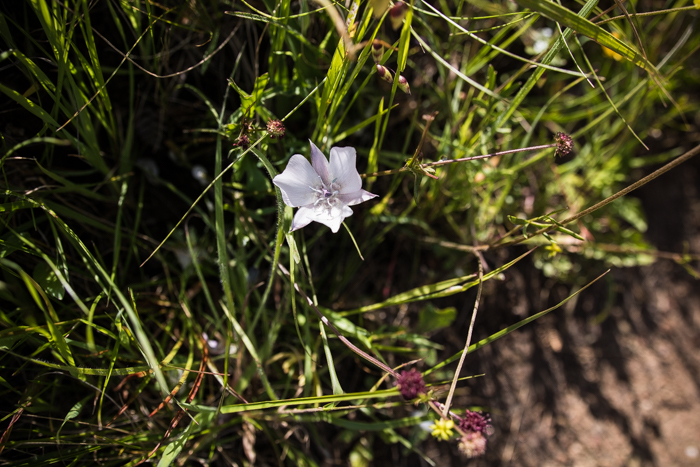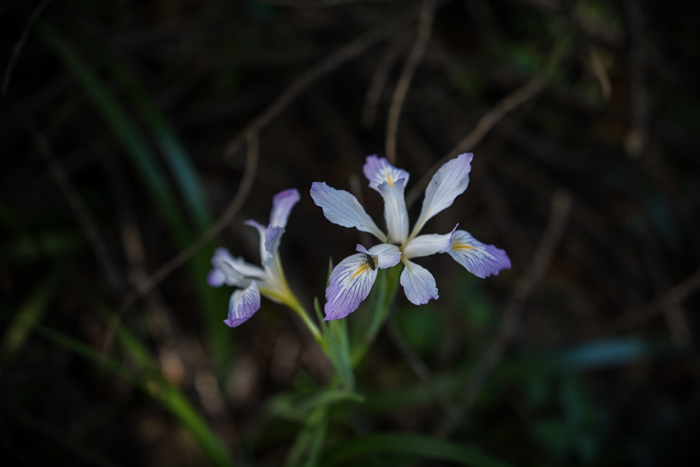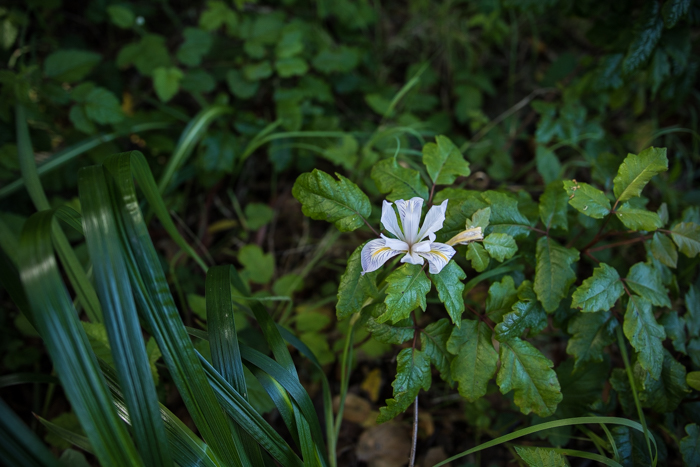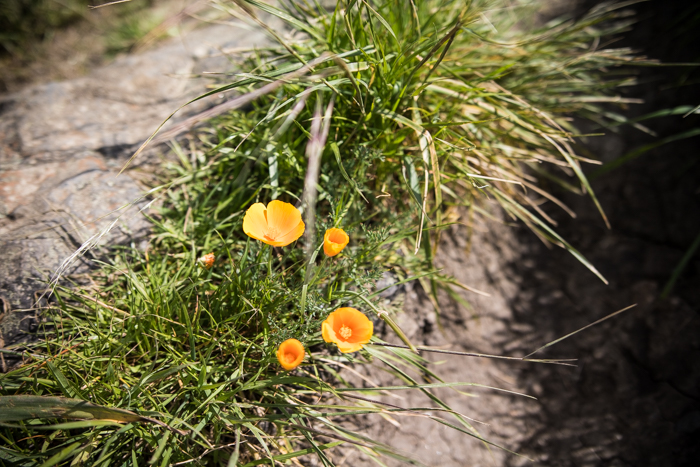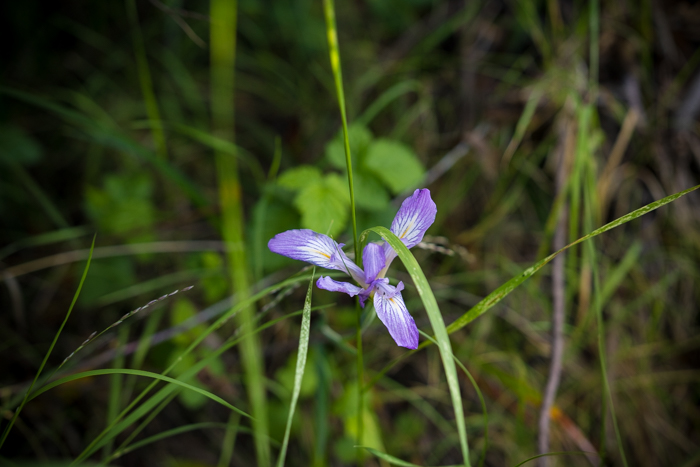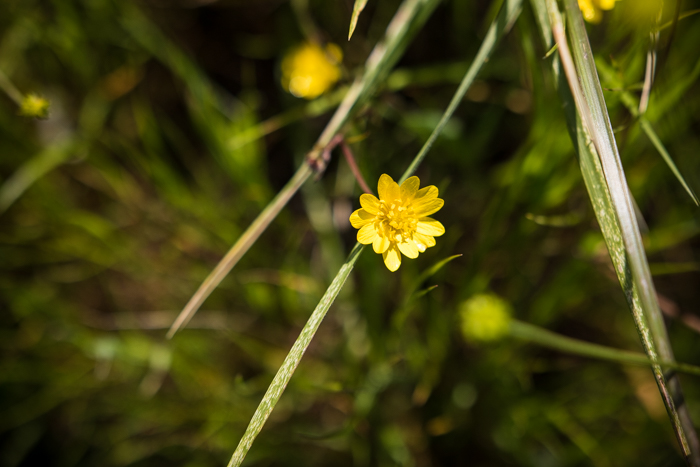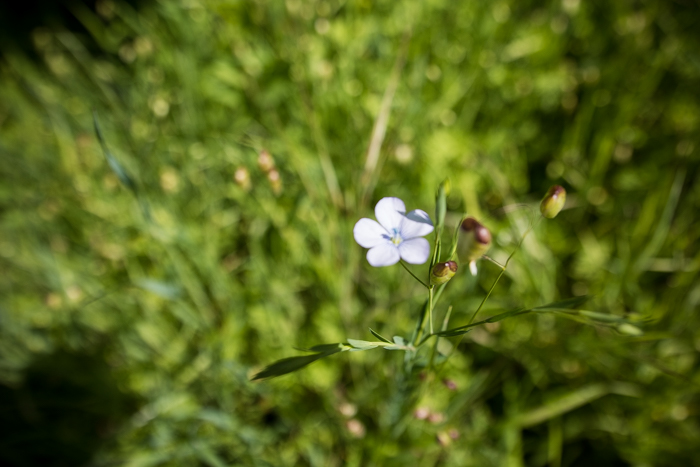Date: 4/14/2017
Location: Ring Mountain (Coordinates: 37.9099° N, -122.4858° W – Elevation: varies, ~20 ft)
Site Description:
Ring Mountain is a ridge on-top of the Tiburon Peninsula, which can be found close by San Francisco within the Marin area. It is clear that this site gives host to a variety of unique species – as it is serpentine in nature (as you will see in one of the photos I’ve attached below). The trail starts at a point next to Paradise Dr – an area I’m quite familiar with having biked around there many times. As one proceeds through the trail – it begins with a fairly manageable ascent in elevation where you are surrounded by foliage. California bay are found in abundance when you traverse the beginning of this trail.
And then suddenly…you are met by this. A wide-open ridge where one can view the surrounding Bay – where Tidy tips and Sky lupines are found in abundance. From here, you can see many of the serpentine outcrops that give rise to a abundance of unique plant-life – the Tiburon mariposa lily among them – an extreme example since this particular lily can only be found on this area in the ENTIRE PLANET (crazy!). Here you witness the true beauty of Ring Mountain – where there is no foliage present and you can see the openness of the entire area.
Species Description:
1) Lupinus nanus (Family: Fabaceae), also known as the “Sky lupine”, was probably one species which I encountered most in abundance. This species of lupine is native to the western United States, and is typically found growing on slopes. Like all lupine species and typically its most prominent characteristic of distinction, its leaf blades were palmately divided into many leaflets (see second photo). The flower inflorescence is generally whorled, with its petals being blue, lavender, or pink (in this case, it was blue/purple). A fun fact (or not-so-fun fact) is that species are considered toxic if directly ingested.
2) Layia platyglossa (Family: Asteraceae), also known as “Tidy tips”, was also a species found in abundance throughout this area. The tidy tips are an annual wildflower, also native to western North America. Its stems are typically erect, holding up a flower head that is composed of 5-18 yellow-ray flowers (yellow flowers with beautiful white-tips). The sepals are also highly modified. Tidy tips are typically cultivated as an ornamental plant – which is not surprising, given how beautiful they are.
In addition, the leaves are fairly narrow, rough, and pubescent. The leaves at the basal part of the stem are dentate/pinnately shaped. Lower leaves are generally lobed and the upper leaves are entire. The blades are simple.
3) Thermopsis californica (Family: Fabaceae), also known as the “California goldenbanner” was another species I found in fair abundance close by the streams coming up the Phyllis Ellman trail. I suppose it was fairly opportune that we had just listened to Negin’s plant family presentation on Fabaceae – as I recollected what I had learned and immediately distinguished the California goldenbanner as a Fabaceae member.
This species is endemic to California. It looks very similar to the dreaded invasive “Scott’s Broom” – but it is not! It is truly a native species to California. Each of its flowers consists of an upflaring top petal, two lip-like lower petals, and a third bottom-most petal that keels upward.
Excursion Narrative:
In preparation for an upcoming hepatology conference where I was set to present at the following week – I had sought to visit Ring Mountain the week before. And it was most opportune that that following Friday was an holiday for Easter. Having looked ahead and seeing fantastic weather set for that day – I immediately planned that my excursion to Ring Mountain for that day.
Now, how to get there? Rent a zipcar? That would make me rush my excursion knowing that I would be charged every hour…Take an Uber? It’d take about $40 for me to Uber there. That’s a big no-no to a broke college student’s budget. Realistically, I could have biked there having done the trek many-a-time, but lugging my bike around while trying to scout out for specific plants would have been a…let’s say…”interesting *cough unrealistic*” attempt at saving money.
Finally, I ended up choosing the cheapest and probably the funnest way I could have planned this trip: taking the ferry across the Bay to Tiburon – something I’ve never done before! I first proceeded to take the bus all the way down to the pier, where upon arriving and realizing I had about an hour until my ferry left – decided to get some In-N-Out. Talk about a pre-game for my botany excursion!
Then…after having consumed my delicious calories, I boarded the ferry! All for a price of around $10 – what a steal! The trip on the ferry was sure to be memorable, and it most definitely was with it being my first time! Having lived in San Francisco for about 4 years and still having never gone on it, I noted to myself that I should do this again at some point…
Upon exiting the ferry, I calculated the price of my Uber to the entrance of Ring Mountain – which turned out to be a much more manageable $8! And arriving at the entrance of the trail, I was met with with an endorphin – inducing mixture of excitement and nervousness. With me undertaking this excursion on my own – this would be the makings of an adventure!
As Dr. Paul had indicated to me prior, I began my excursion with traversing the Phyllis Ellman trail, which I would take until the Ring Mountain Fire Road. The trail consisted of a gentle upward climb, where I noticed many familiar species that we had witnessed prior (Tidy tips immediately come to mind – these guys were everywhere!). I also spotted a lizard during this part of the trail!
The most interesting and exciting part of this excursion was the prospect of being alone, with out the botanical guidance of Dr. Paul or without the company of friends. It made for a very meditative experience altogether. This was where I was able to put where I learned from the class to the test – relying on key features and from recollection from prior experience to distinguish plant families and genuses.
And finally, I exited the foliage and found the open expanse of Ring Mountain – which was truly a sight to behold. I climbed atop what I would discover is called “Turtle Rock” and sat there for quite awhile – engaged in introspection about my place and role within this role (cheesy – I know).
At a certain point, I ran into a local who told me he was retired and had lived in a nearby house for about 25 years! He was an anthropologist in the past, and was intimately familiar with the surrounding plant life. He had an interesting story to tell as a Dutch immigrant to America – and also, told me that “If you’re looking for the Tiburon Mariposa Lily, you’re about a month too early!”. After a great conversation, we bid each other adieu, and after spending some more time along the Fire trail, I began experience the all-familiar signs of being famished and fatigued – so I began to make my way down back to the trails’ beginning.
Along the way, after being identify a few more species, I ran into a dog who seemed to be having the TIME OF HIS LIFE. It definitely belonged to a local – and it ran back and forth up and down the trail and also in circles around me. This entire expanse – seemingly, was its playground!
And finally, after a long day spent engaged in botany, hiking, and being quite high-on-life and at the same time being quite energetically drained – I decided to take an Uber back to my place! Talk about a flowerful day!
Other Encountered Plant Species!

